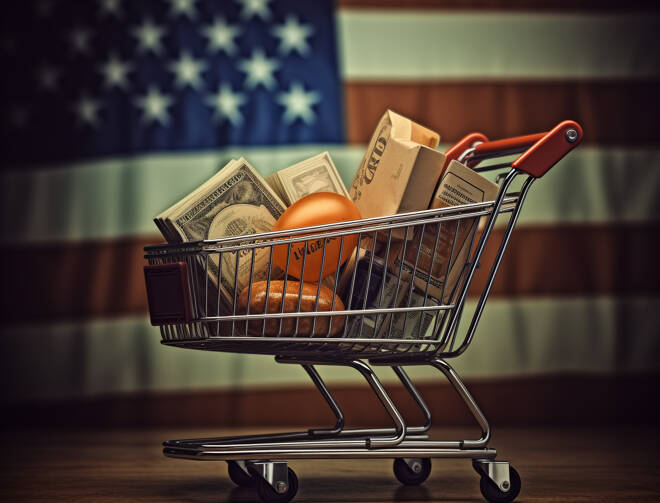Advertisement
Advertisement
Fed’s Favorite Gauge Shows Inflation Uptick Amid Consumer Spending Spree
By:
Key Points:
- PCE inflation edges up 0.2% monthly, 2.5% annually, as Fed weighs first rate cut in 4+ years
- Core PCE rises 2.6% annually, slightly below estimates
- Personal income grows $75.1B (0.3%), while PCE jumps $103.8B (0.5%), signaling robust consumer spending
The Dance of Dollars: Income and Spending on the Rise
The Commerce Department’s July report on Personal Consumption Expenditures (PCE) shows a slight uptick in inflation, aligning with the Federal Reserve’s preferred measure as it considers its first interest rate cut in over four years. The PCE price index rose 0.2% month-over-month and 2.5% year-over-year, matching economists’ expectations. The core PCE, which excludes volatile food and energy prices, also increased 0.2% for the month but showed a slightly lower than expected 2.6% annual increase.
Personal income grew by $75.1 billion (0.3%) in July, while disposable personal income (DPI) increased by $54.8 billion (0.3%). Personal consumption expenditures (PCE) saw a more significant rise of $103.8 billion (0.5%). After adjusting for inflation, real DPI increased by 0.1%, and real PCE grew by 0.4%, with goods spending up 0.7% and services up 0.2%.
Where the Money Flows: Compensation, Cars, and Creature Comforts
The increase in personal income was primarily driven by higher compensation. The rise in PCE was split between increased spending on services ($59.3 billion) and goods ($44.5 billion). Notable contributors to the services increase included housing and utilities, while motor vehicles and parts, as well as food and beverages, led the growth in goods spending.
The Price Puzzle: Goods Down, Services Up
Regarding prices, the PCE price index’s 0.2% monthly increase was composed of a slight decrease in goods prices (less than 0.1%) and a 0.2% increase in services prices. Food prices rose 0.2%, while energy prices saw a minimal increase. The annual PCE price index increase of 2.5% reflected a marginal decrease in goods prices, countered by a 3.7% rise in services prices. Food and energy prices showed annual increases of 1.4% and 1.9%, respectively.
Driving the Economy: Cars and Healthcare Lead the Charge
The growth in real PCE was largely attributed to increased spending on motor vehicles and parts in the goods category, and health care in the services category.
Savings Snapshot: Americans’ Fiscal Cushion
The personal saving rate stood at 2.9%, with personal saving totaling $598.8 billion in July. Personal outlays, which combine PCE, personal interest payments, and personal current transfer payments, increased by $103.3 billion.
The Big Picture: Economic Complexity Challenges Policymakers
This report provides crucial insights into consumer behavior and economic trends, particularly as the Federal Reserve considers potential changes to its monetary policy. The slight increase in inflation, coupled with continued growth in personal income and spending, suggests a complex economic landscape that policymakers will need to navigate carefully in the coming months.
About the Author
James Hyerczykauthor
James Hyerczyk is a U.S. based seasoned technical analyst and educator with over 40 years of experience in market analysis and trading, specializing in chart patterns and price movement. He is the author of two books on technical analysis and has a background in both futures and stock markets.
Did you find this article useful?
Latest news and analysis
Advertisement
